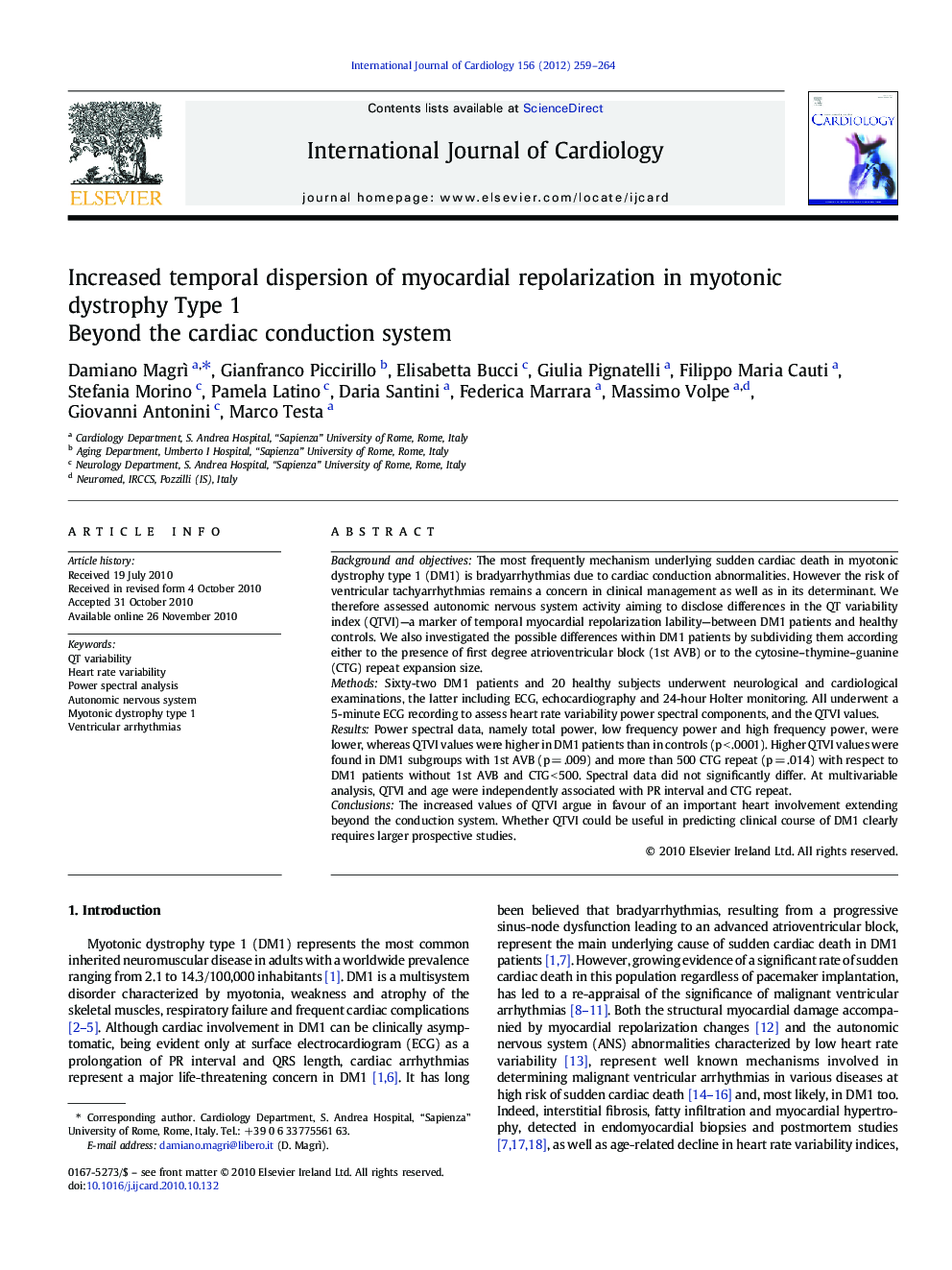| Article ID | Journal | Published Year | Pages | File Type |
|---|---|---|---|---|
| 5977998 | International Journal of Cardiology | 2012 | 6 Pages |
Background and objectivesThe most frequently mechanism underlying sudden cardiac death in myotonic dystrophy type 1 (DM1) is bradyarrhythmias due to cardiac conduction abnormalities. However the risk of ventricular tachyarrhythmias remains a concern in clinical management as well as in its determinant. We therefore assessed autonomic nervous system activity aiming to disclose differences in the QT variability index (QTVI)-a marker of temporal myocardial repolarization lability-between DM1 patients and healthy controls. We also investigated the possible differences within DM1 patients by subdividing them according either to the presence of first degree atrioventricular block (1st AVB) or to the cytosine-thymine-guanine (CTG) repeat expansion size.MethodsSixty-two DM1 patients and 20 healthy subjects underwent neurological and cardiological examinations, the latter including ECG, echocardiography and 24-hour Holter monitoring. All underwent a 5-minute ECG recording to assess heart rate variability power spectral components, and the QTVI values.ResultsPower spectral data, namely total power, low frequency power and high frequency power, were lower, whereas QTVI values were higher in DM1 patients than in controls (p < .0001). Higher QTVI values were found in DM1 subgroups with 1st AVB (p = .009) and more than 500 CTG repeat (p = .014) with respect to DM1 patients without 1st AVB and CTG < 500. Spectral data did not significantly differ. At multivariable analysis, QTVI and age were independently associated with PR interval and CTG repeat.ConclusionsThe increased values of QTVI argue in favour of an important heart involvement extending beyond the conduction system. Whether QTVI could be useful in predicting clinical course of DM1 clearly requires larger prospective studies.
